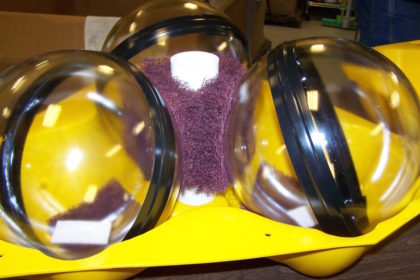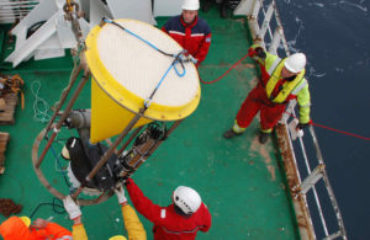
Proper care over time is key to the long-life of Glass flotation. Inspect your glass after every deployment to check for signs of fatigue from repeated pressure cycling. Glass flotation inspection guidelines:
- Inspect the black tape around the equator– it should be in good condition and be free of nicks and cuts.
- Look through the sphere for spalling (spiderweb-like marks) at the line where the equators meet.
- Confirm there is no more than one teaspoon (5ml) of glass dust visible in the sphere.
If you see any of the signs above, the glass may need to be replaced. Contact us to learn more.
McLane Glass flotation, depth-rated to 7,000m, is ideal for moorings and custom instrument design such as ocean-bottom seismology instruments. Flotation modules with 12” borosilicate glass spheres have 10 to 40kg of buoyancy and are protected by polyethylene, high visibility hardhats. Multiple spheres in a modular configuration have a through-center connecting rod to reduce mooring drag. This design eliminates cable twist for more reliable mooring performance.
We offer three glass flotation models: G2200 single sphere model (10kg of buoyancy), G6600 triple sphere model (30kg of buoyancy), and G8800 quad sphere model (40kg of buoyancy).



